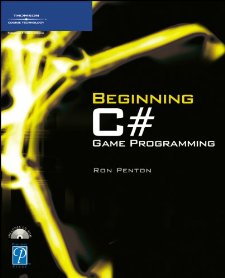Day 605 of 1000
This is the fourth in a series of posts on how we taught our children to program, what we did wrong and how we think we could have done better. You can see the introductory post and index to the series by clicking here.
 At the beginning of the school year, just before Christian turned 11, we decided it might be a good thing for Christian to learn a object-oriented, non-garbage collected language with a lot of libraries and support. The three obvious choices were Python, C#, and Java. If I had to do it again, I probably would hanve started Christian with Python or Java, but I was doing some work in C# on Windows for my job at the time and was playing with Mono (a cross-platform C# implementation).
At the beginning of the school year, just before Christian turned 11, we decided it might be a good thing for Christian to learn a object-oriented, non-garbage collected language with a lot of libraries and support. The three obvious choices were Python, C#, and Java. If I had to do it again, I probably would hanve started Christian with Python or Java, but I was doing some work in C# on Windows for my job at the time and was playing with Mono (a cross-platform C# implementation).
I wanted Christian to work toward the ability to program something in which he was interested so when I found Beginning C# Game Programming, it seemed a good fit. The first few chapters explained the concepts of object oriented programming and the C# programming language. Visual Studio Express, Microsoft’s Integrated Development Environment (IDE) for learners and hobbyists had come out not too long before this, so I spent a couple of hours on a Saturday downloading the program with Christian and showing the fundamentals of how to write, build, and run a “Hello, World!” program.
Next, as part of Christian’s daily homeschool plan, I assigned him to work on C# for fifteen minutes per day. I wish I could say I assigned the work as part of a rigorous, well-thought plan to teach Christian to program, but the reality is that I assigned it to him because he was excited about learning to program. I was more concerned that he focus on Literature, Writing, Math, and Science than programming. We spent a lot more time on those core materials than his programming efforts.
The reality is that all I really did in terms of “teaching” him anything about programming (and I use the word “teaching” very loosely here), is review where he said he was in the book, quiz him a little bit about the concepts in that part of the book, look at how his program ran, and give him a few hints about coding style. He was on his own with this. The amazing thing is that he came away with quite a good understanding of Classes, Objects, Encapsulation, Inheritance, Polymorphism, and the concepts of Object Oriented Programming, as well as a pretty good knowledge of how to make things happen in a C# program.
Christian followed this program for about five months to get through the first four or five of chapters of the book. The reason we stopped and moved on to something else is because Christian’s excitement diminished after about four months. After that, we stopped programming for awhile so Christian could work on other computing projects. It was a great exercise that was just long enough to keep a 11 year old kid interested. Again, if I had to do it over, I would do it differently and will explain how I might have done it in one or more later posts.

Leave a Reply